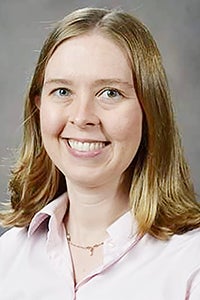April is a Time to Fertilize Lawns
Published 8:30 am Sunday, April 2, 2023

- Mary Helen Ferguson
|
Getting your Trinity Audio player ready...
|
All turfgrasses commonly grown in Louisiana – including centipedegrass, St. Augustinegrass, bermudagrass, zoysiagrass, carpetgrass, and bahiagrass – are “warm-season” grasses. It’s recommended that these turfgrasses be fertilized between April and August. (If your grass sustained damage in the recent cold snap, you can wait until you see signs of it starting to grow again to fertilize.)
Applying nitrogen-containing fertilizers (including weed and feed products) too early or too late can contribute to weed growth and to incidence of the disease large patch. If applied too late, grass may also be less cold hardy when cold temperatures arrive.
While fertilizing at the wrong time promotes weed growth, fertilizing at suggested times and rates helps turfgrass compete with weeds. This is an important part of lawn weed management.
We encourage taking a soil test to determine whether soil pH needs to be adjusted and if nutrients other than nitrogen are needed, but nitrogen fertilizer recommendations are made on a default basis. The forms of nitrogen applied in most fertilizers do not tend to stay in the soil for long. In our climate, they are largely either taken up by the plant or leached out of the soil with rain or irrigation water relatively quickly.
The amount of nitrogen recommended annually varies depending on the type of turfgrass.
Centipedegrass and carpetgrass are the least demanding. For both, 1 pound per 1000 square feet of actual nitrogen per year is sufficient. This can be supplied as 1 pound of slow-release nitrogen in April or 0.5 pound of readily soluble nitrogen in April and June.
For St. Augustinegrass and zoysiagrass, 1 pound per 1000 square feet of actual nitrogen in either slow-release or readily soluble fertilizer is recommended in April and June, for a total of 2 pounds of nitrogen. An additional pound of nitrogen can be applied to St. Augustinegrass in August, if desired.
Bermudagrass has the greatest nitrogen demand. Anyone who has tried to keep bermudagrass out of their lawn or flower bed may find this surprising, but the higher rate is needed to maintain turfgrass quality. For bermudagrass lawns, 1 pound of actual nitrogen per 1000 square feet can be applied in April, June, and August. An additional 1 pound application in May is suggested for hybrid bermudagrass.
The amount of fertilizer needed to get 0.5 or 1 pound of nitrogen depends on the concentration of nitrogen in the fertilizer. For example, if you’re using a slow-release fertilizer with the analysis 16-0-8 (16% nitrogen, 0% phosphate, and 8% potash), it would take 6.3 pounds of it to get 1 pound of actual nitrogen.
Many slow-release fertilizers provide some potassium/potash and sulfur, as well as nitrogen. Sulfur, like inorganic forms of nitrogen, is readily leached out of soil if not taken up by plants, and in soil test reports, we often see that sulfur is low.
Potassium is not lost from the soil as readily as nitrogen and sulfur, but some is generally leached out over time. Supplying some on an annual basis is likely to be beneficial.
If a soil test shows that phosphorus is needed, it’s fine to use a fertilizer like 8-8-8, 10-10-10, or 13-13-13 for a limited number of applications. For example, 5 pounds of 10-10-10 would supply 0.5 pound of nitrogen, phosphate, and potash, while 10 pounds of 10-10-10 would provide 1 pound of each.
However, especially when fertilizing centipedegrass, it’s important not to overapply phosphorus/phosphate. Repeated use of fertilizers like 8-8-8, 10-10-10, and 13-13-13 may lead to a buildup of too much phosphorus and harm turfgrass.
Let me know if you have questions.
Dr. Mary Helen Ferguson is an Extension Agent with the LSU AgCenter, with horticulture responsibilities in Washington and Tangipahoa Parishes. Contact Mary Helen at mhferguson@agcenter.lsu.edu or 985-277-1850 (Hammond) or 985-839-7855 (Franklinton).




